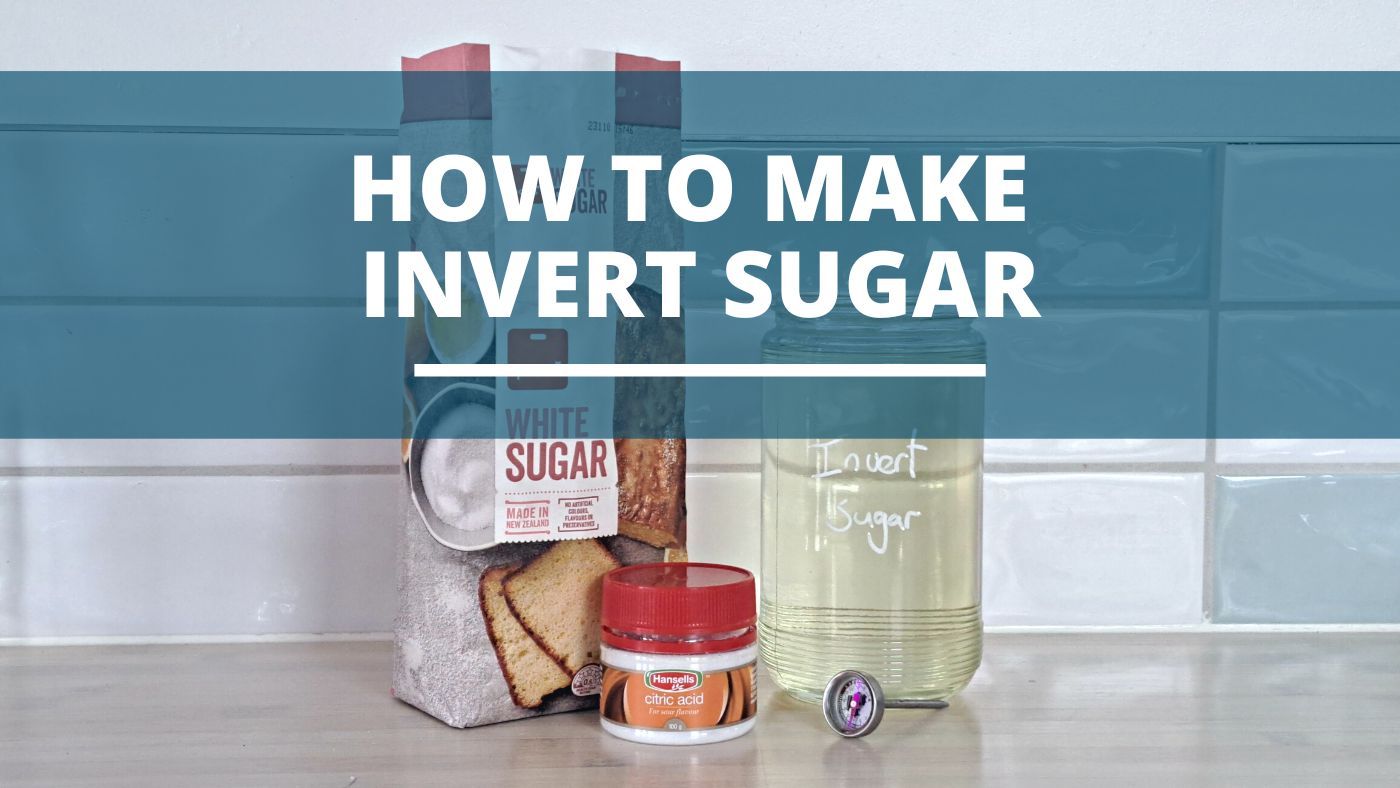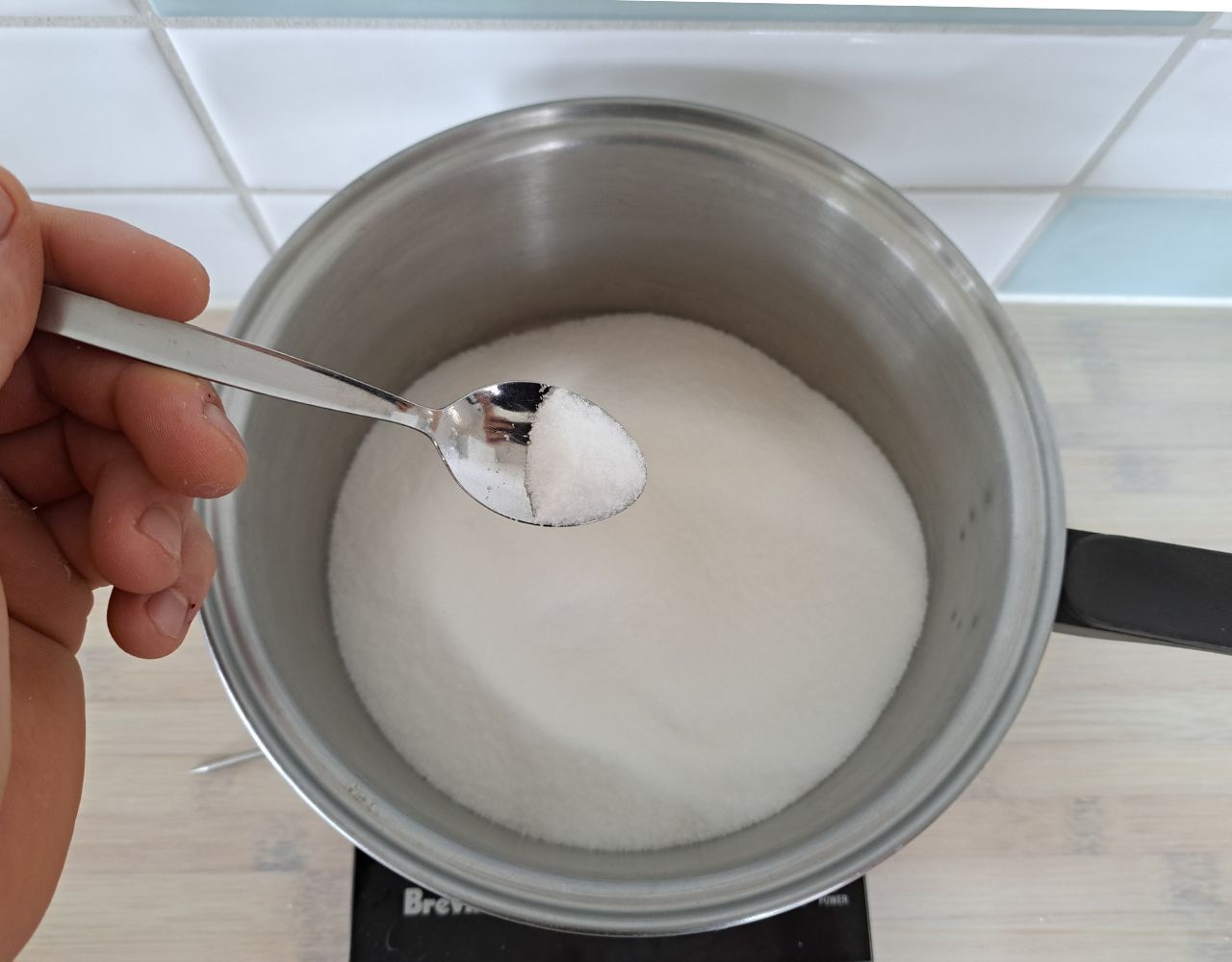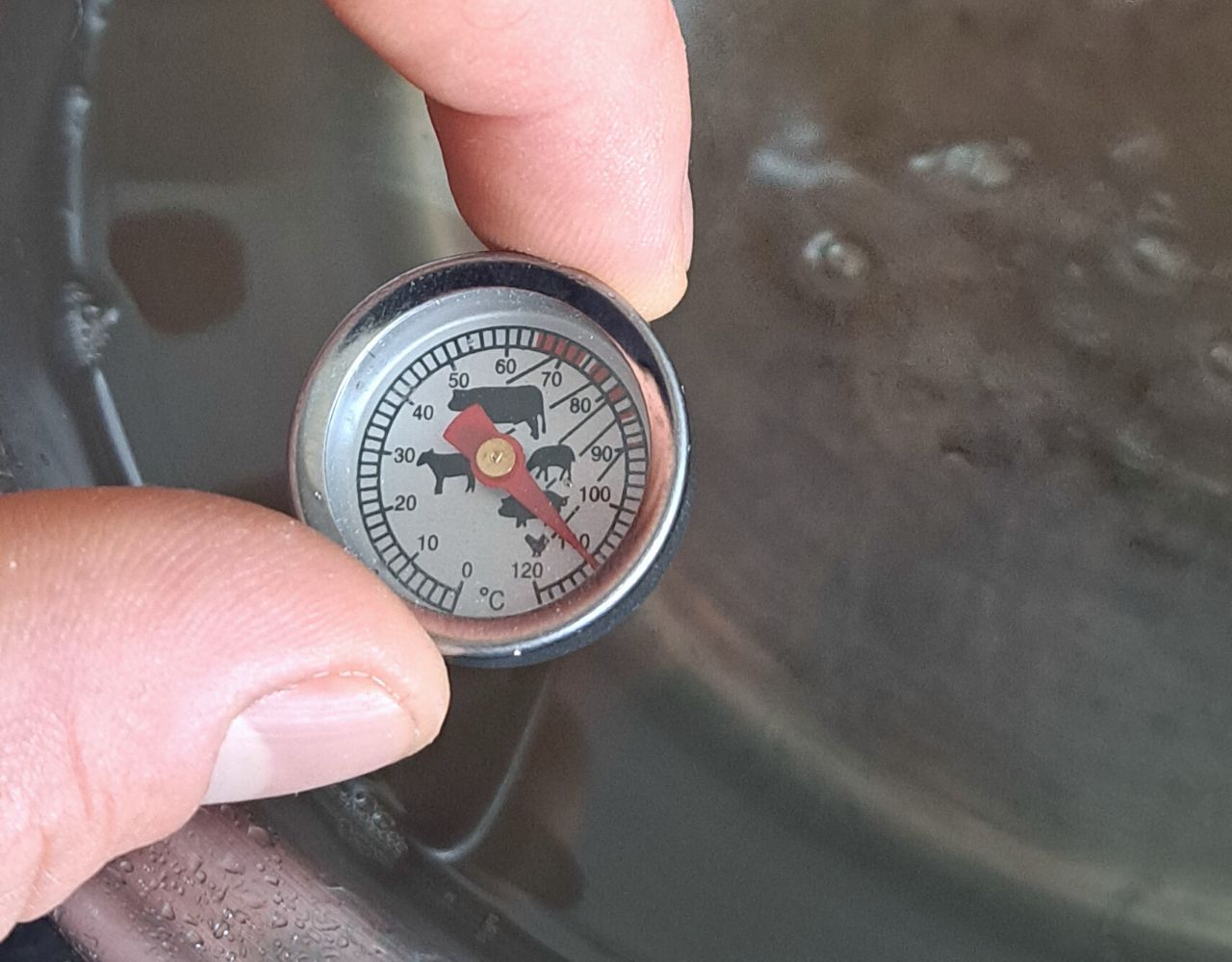Ingredients, Recipes, Sugars, Starches and Grains
How To Make Invert Sugar (Distiller’s Guide)
From improving the texture to prolonging the shelf life of baked goods, inverted sugar truly is a baker’s best secret. But did you know you can use this magical elixir to improve the quality of your spirit? It’s highly fermentable, allowing for a high-proof spirit, and creates a smoother well-rounded drink.
To make:
- Pour 4 cups of sugar and 2 cups of water into a saucepan.
- Heat the mixture over medium heat, stirring constantly with a wooden spoon until the sugar dissolves.
- Add 1/4 tsp of citric acid or cream of tartar and stir.
- Insert a thermometer into the mixture and stir occasionally, until it reaches 236℉ (113℃). This can take anywhere from 20 to 30 minutes.
- Remove it from the heat and let it cool.
- Transfer to a glass jar or airtight container.
Now you’re ready to add it to your wash or use it to sweeten your finished product.
In this post, we’ll explore the benefits of the sweetener and go into depth on how to make it so you have a constant supply of this good stuff.
Table of Contents
What Is Invert Sugar
Invert sugar is a sweetener made by breaking down sucrose (table sugar) into its two simpler components: glucose and fructose. Its commonly used in baking and the brewing, winemaking and distilling industries.
How Is Invert Sugar Made?
The syrup is made by hydrolyzing regular table sugar (sucrose), a process that breaks down sucrose molecules into two simpler sugars: glucose and fructose. This is achieved by boiling the sugar in water and adding an edible acid, such as citric acid or lemon juice. The resulting syrup is sweeter than granulated sugar.

The Benefits Of Invert Sugar For Brewing And Distilling
Invert sugar is a popular sugar source for fermentation in brewing and distilling. It ferments faster and more completely than regular sugar. It also reportedly produces a cleaner, smoother-tasting final product.
Advantages
- Highly fermentable so your wash will ferment dry, faster.
- Can increase the alcohol content of the final product.
- Makes for a more palatable, well-rounded drink.
- Reportedly removed the sharp stinging taste from the final neutral spirit.
- Resists crystallization better than table sugar.
Disadvantages
- More expensive than regular sugar.
- time-consuming to make
- Really hard to make in large quantities.
The Benefits Of Invert Sugar Baking And Cooking
Invert sugar has been used in baking for over 100 years, most notably in the form of Golden Syrup. It’s great because it won’t cease or crystalize (a pastry chef’s nightmare!) and also results in a longer shelf life for the final baked good.
Advantages
- Retains moisture for more tender baked goods.
- Prolongs shelf life.
- Sweeter than regular sugar so less sugar is needed in recipes.
- Resists crystallization better than table sugar.
Disadvantages
- More expensive than regular sugar.
So, Is Using Invert Sugar Worth It?
Using inverted sugar is definitely worth it if you can justify the cost to buy it, or the complexity of making it yourself. As home distillers, we’re always looking to create a wash that ferments dry to yield a high-alcohol product. Using inverted sugar grants you this privilege in a short period. Also, it pacifies the intensity of ethanol to make your product more palatable and well-rounded. We recommend you make use of it!

Where To Buy Invert Sugar?
You can buy the sweetener at specialty baking and brewing supply stores, as well as online retailers. Some grocery stores may also carry it in their baking aisle or specialty foods section.
What Is A Substitute For Invert Sugar?
There are a variety of tasty sweet substitutes you can consider. But each sweetener will have its own flavor and texture profile, so be mindful of the one you choose to employ. You can try:
- Glycerin
- Golden Syrup
- Honey
- Agave
- Corn syrup
- Molasses
How To Make Invert Sugar At Home (Step-By-Step)
Here’s a detailed guide to making your own inverted sugar.
Caution: Heating sugar is really dangerous as it can burn much worse than boiling water. it also sticks to your skin. Finally, burning sugar will catch fire and is highly combustible.
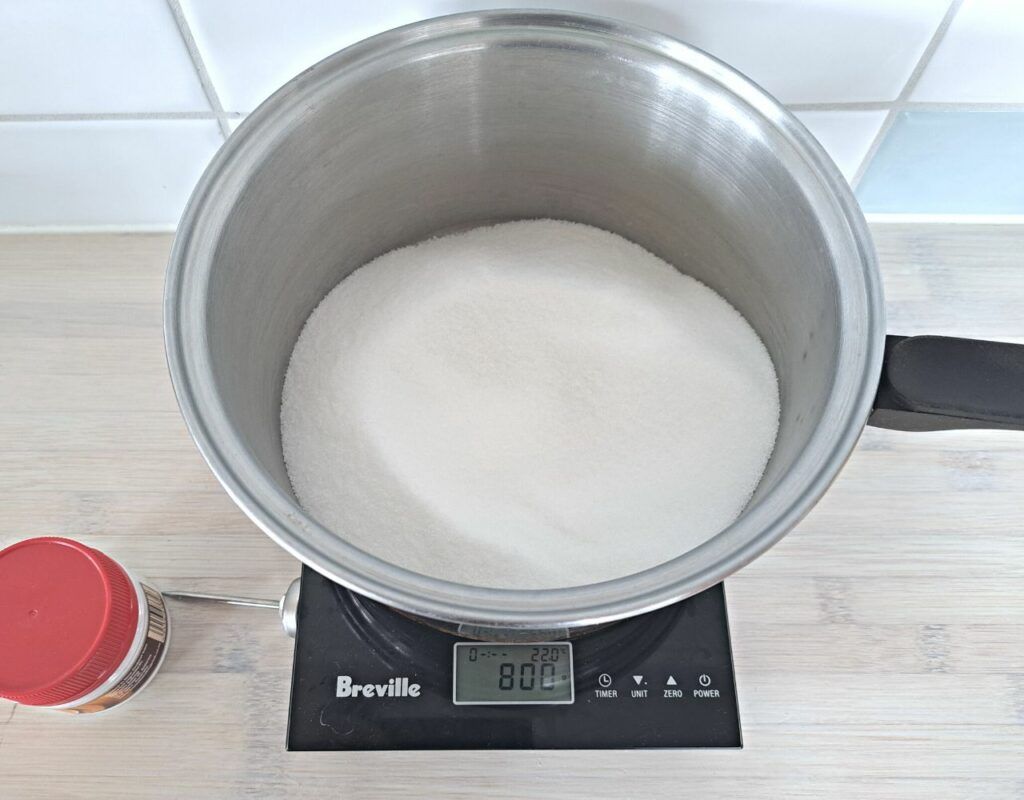
Tools
- Large saucepan
- Pastry Thermometer
- Wooden spoon
- Glass jar or airtight container for storage
Ingredients
- 4 cups (800g) granulated sugar
- 2 cups (400ml) water
- ¼ tsp citric acid (or edible acid of choice)
Method
- Pour the sugar and water into the saucepan.
- Heat the mixture over medium heat, stirring constantly until the sugar dissolves.
- Add the citric acid and stir.
- Insert a thermometer and stir occasionally until it reaches 236℉ (113℃). This can take anywhere from 20 to 30 minutes.
- Remove it from the heat and let it cool to room temperature.
- Transfer to a glass jar or airtight container for storage.
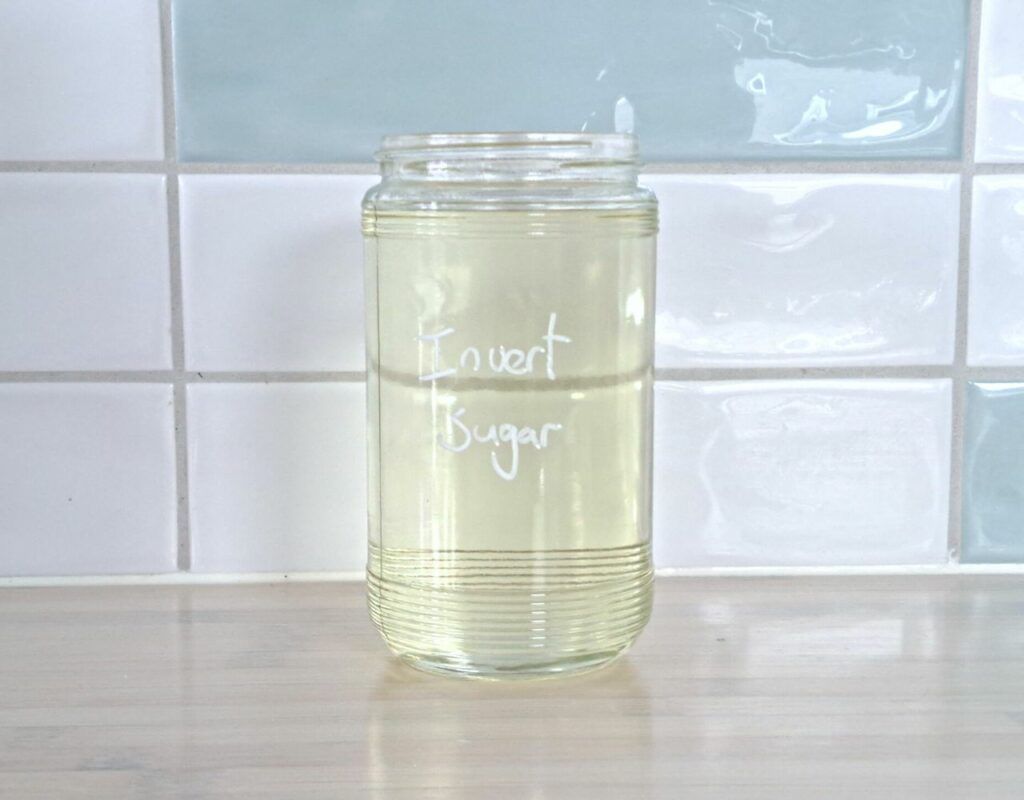
Storage
Store the syrup at room temperature for 6 months to a year.
How To Make Invert Sugar At Home (Step-By-Step)
Equipment
- Large saucepan
- Pastry Thermometer
- Wooden spoon
- Glass jar or airtight container for storage
Ingredients
- 4 cups granulated sugar
- 2 cups water
- 1/4 tsp citric acid (or edible acid of choice)
Instructions
- Step 1: Pour the sugar and water into the saucepan.
- Step 2: Heat the mixture over medium heat, stirring constantly until the sugar dissolves.
- Step 3: Add the citric acid and stir.
- Step 4: Insert a thermometer and stir occasionally until it reaches 236℉ (113℃). This can take anywhere from 20 to 30 minutes.
- Step 5: Remove it from the heat and let it cool to room temperature.
- Step 6: Transfer to a glass jar or airtight container for storage.
Notes
Adverse Effects Of Invert Sugar
Invert sugar is a sweeter version of granulated sugar, and like sugar, it can adverse effects. The key to using it is moderation. In excess, it can result in:
- Dental problems: It’s a highly fermentable sugar that can contribute to tooth decay.
- Blood sugar levels: Because it’s a simple sugar, it’s quickly absorbed into the bloodstream, which can spike your blood sugar levels, making it less ideal for diabetics.
- Weight gain: It’s packed with calories and can contribute to weight gain.
Frequently Asked Questions
Q. At what temperature does sugar invert?
Sugar inverts at 236℉ (113℃).
Q. Is invert sugar just simple syrup?
Inverted sugar is not simple syrup. Simple syrup is equal parts water and sugar. But inverted sugar calls for more sugar to water and acid to speed up the inversion of sugar.
Q. What is a natural source of invert sugar?
Honey is a natural source of inverted sugar. Honeybees produce an enzyme that naturally breaks down sucrose into its main constituents.
Q. How to make invert sugar homebrew?
Follow these steps to make invert sugar for home brewing:
1. Pour 4 cups of sugar and 2 cups of water into a saucepan.
2. Heat the mixture over medium heat, stirring constantly with a wooden spoon until the sugar dissolves.
3. Add 1/4 tsp of citric acid or cream of tartar and stir.
4. Insert a thermometer into the mixture and stir occasionally, until it reaches 236℉ (113℃). This can take anywhere from 20 to 30 minutes.
5. Remove it from the heat and let it cool.
6. Transfer to a glass jar or airtight container.
Q. Is molasses an inverted sugar?
Molasses is not inverted sugar. It’s a by-product of a sugar refining process. Also, it contains a high amount of sucrose and some glucose and fructose.
Q. Is honey an invert sugar?
Honey is a natural source of inverted sugar.
Q. Is golden syrup the same as inverted sugar?
Yes, Golden syrup is the same as inverted sugar, and is the way most people come to try invert sugar (whether they reali it or not!)
It was first produced by a company called Abram Lyle & Sons in 1883. Golden syrup quickly became a popular sweetener in Britain and was used in a variety of recipes, including desserts, cakes, and puddings. During World War I, golden syrup was used as a substitute for sugar, which was rationed.
Conclusion
Creating inverted sugar is the best thing you can do for a more pleasurable brew day (and product). The sweetner is ensures your wash ferments dry and you’re less likey to wind up with a crystalized product. It also uses minimal ingredients–edible acid, table sugar, water–so you don’t have to worry about purchasing expensive versions from specialty stores.

